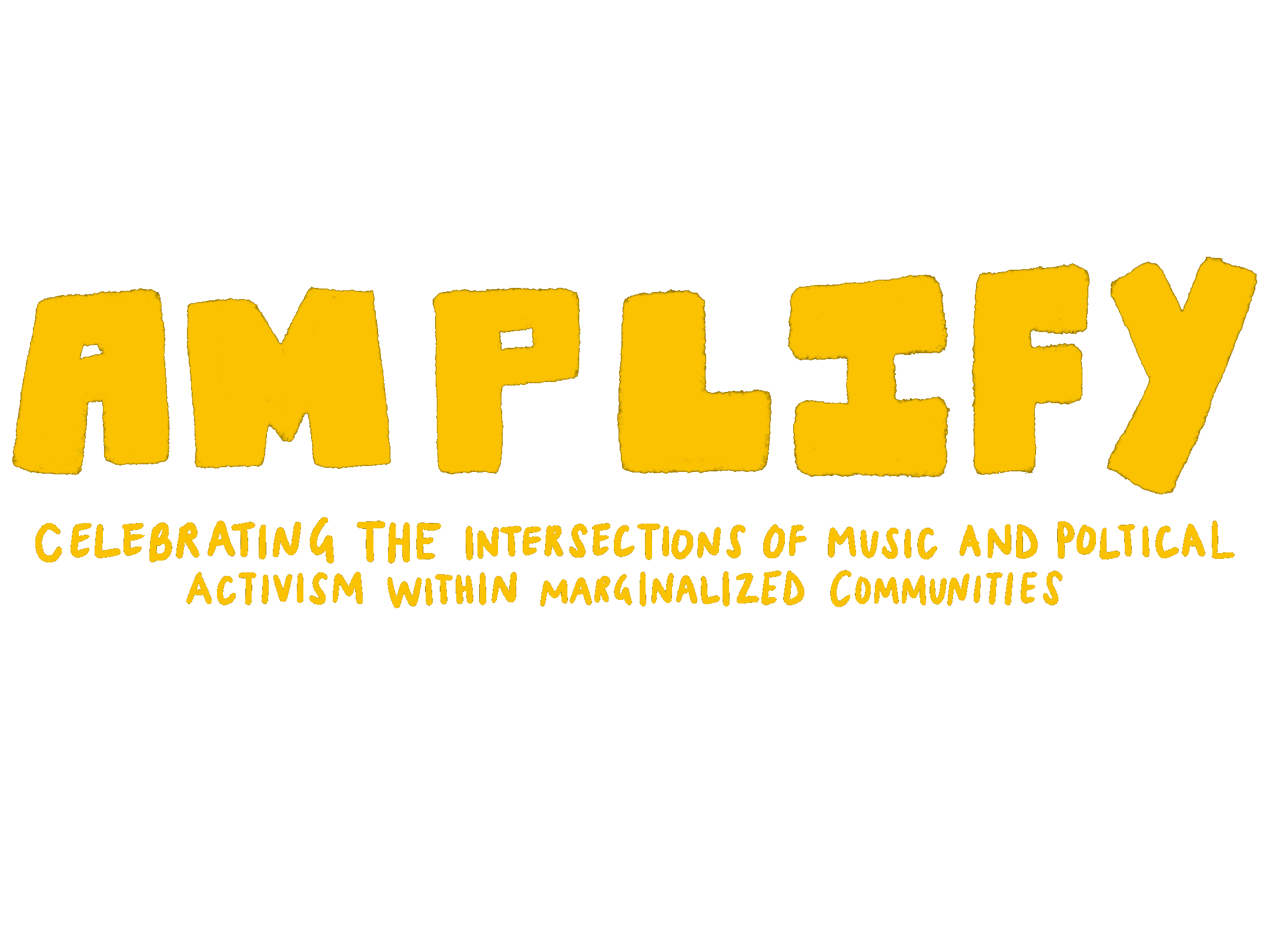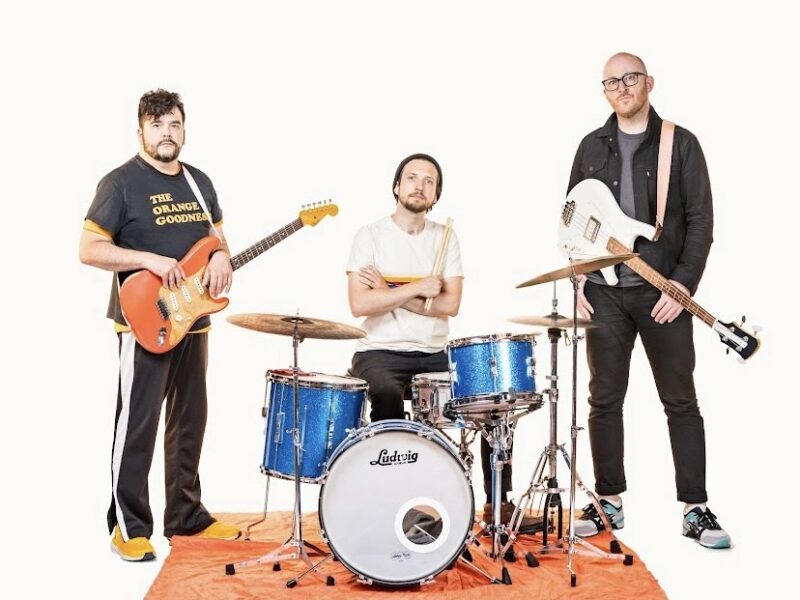Looking to elevate your appreciation of protest music that addresses social and political injustices? Here’s how to get the most out of listening to social justice music.
Music has become an intrinsic part of our daily lives, serving as a source of entertainment and relaxation during various activities. From working out to daily commutes, cooking, or winding down after a long day, music is a go-to for many people. While there’s no harm in enjoying music for its entertainment value, it’s important to acknowledge the missed opportunity in not engaging more deeply with it. By only listening passively, we may overlook music’s ability to move us, challenge our perspectives, and ignite social change. Actively listening to and analyzing the themes, messages and sonic elements in music can be a powerful tool in exploring cultures different from your own, understanding current events, gaining historical perspectives, and engaging with social justice issues.
Ok. That’s a lot. But it’s important. And to help you through it, we have talked to music listeners, performance artists, and music scholars whose insights can help you delve deeper into social justice developments, historical perspectives and cultural identities that are reflected in music.
Understand how you listen to music
One thing to understand, however, is that there are two types of music listeners: Casual listeners who enjoy a song’s instrumentation and only notice lyrics in the song’s catchy chorus. And emotional listeners who feel connected to themes and messages in a song and their lyrics.
Elliot Powell, music scholar and co-editor of the Journal of Popular Music, leans more toward an emotional listener, thoroughly analyzing songs and their visuals.
“I’m thinking about what’s happening in the music, the samples, the lyrics and I’m writing all these things down. I tend to write by hand before I kind of take it to the laptop in a Google doc but that’s where I’m nerding out,” he said. “I was teaching a class…and Lady Gaga’s new music video was about to come out and the students begged me to devote some class time to watching the music video together. We did and then we were collectively taking notes on what we were seeing. We were using course readings to help make sense of the music video and I think working collectively is just really important in processing music.”
Jessica Lopez Lymann, performance artist and Xicana feminist scholar, says that casual and surface-level listening is ok too.
“Just because we have access or the ability to learn or listen, it doesn’t mean that we will,” she said. “What I find exciting as an artist myself, is the potential. One song will not change the world but multiple songs with conversations, with performances, with collectives, with people coming together…simultaneously start to lead to change and I think that’s what we see in protest music that kind of starts to become an anthem, and so I think we can approach these songs and this music in different ways and even if we don’t have the same shared values or political consciousness, at least it’s an invitation to go deep.”
Understand your own positionality
“Identities are the names we give to the different ways we are positioned by, and position ourselves within the narratives of the past.” – Stuart Hall.
Music, as a cultural right, may help in healing marginalized communities, dismantling social limitations, and serve as a vehicle for social change but amid all of that, it’s important to be self-reflexive on your own positionality, which is how differences in social position and power shape identities and access in society.
“If you, as a listener, understand who you are – the time period, the generation you’re apart of, the race, ethnic or national background, the language you speak – and how that is tied to certain privileges or not, that’s very important,” Lymann said. “We have to be critical. Why are certain songs the songs that we hear? Why are certain artists the artists that we see?…A song is not just a song, right? It’s much deeper than that and I think that’s really important when we’re thinking about how we could learn about other cultures through music.”
Listen to songs that reveal key changes in society
“I choose to reflect the times and situations in which I find myself. That to me is my duty. And at this crucial time in our lives when everything is so desperate…How can you be an artist and not reflect the times?” – Nina Simone
For centuries, protest songs have held a mirror to the world, reflecting social justice struggles for abolition of slavery, universal suffrage, war, political and social inequality, and many human rights movements. Historical context can at times help us understand the political importance of a piece of music even when a song isn’t explicitly political. Powell uses the examples of H.E.R.’’s “I Can’t Breathe” song released after the murder of George Floyd to first describe an explicitly political song.
“She’s creating that in the wake of the murder of George Floyd so that is very clearly what the song is about from the title because we know the context in which George Floyd was killed and what he said,” Powell said. “But also ‘I Can’t Breathe’ resonates within larger Black political struggles dealing with the police.” he said.
Powell uses Megan Thee Stallion and Cardi B’s ‘WAP’ song to describe an implicitly political song that is created after a long historic struggle for women empowerment and autonomy.
“It’s political given the ways in which women’s sexuality and especially women of color’s sexuality has been policed, has been surveilled, has been regulated now but also historically,” he said. “Black women artists have found music to be a space to express the kinds of sexual desires, practices, pleasures that were forbidden within larger society.”
While this kind of music can be healing and transformative for some, others may stay away from it, not engaging deeply with political lyricism and are instead drawn to feel-good music.
“I like songs about love and it’s not really about color or culture,” said Spoken Word artist and performer, John Goff. “My favorite artists like Phil Collins and Prince both did some socially conscious music, but I gravitated to their love songs. Do I like songs about the movement? It’s not my first go-to. I will listen to it but it’s not something I’m going to seek out.”
Powell argues that “feel-good music” isn’t about escapism, but rather a way for marginalized communities to imagine alternative worlds.
“I tend to shudder sometimes when people talk about certain forms of popular culture as being forms of escape in part because it’s not for me,” said Powell. “Escapism seems as if it’s a kind of singular thing that you’re trying to hide from, but I think for those of us who are marginalized – on race, gender, sexuality, class, ability or those at the intersections – it’s not simply about escape. It’s an understanding of the violent world in which we live and how music can be a space for us to step into…and imagine a different world in order to create an alternative world.”
Seek music that is a gateway to cultural identity
For some cultures, music listening is not just a hobby; it is a cultural identifier. Inextricably linked to ritual ceremonies, festive events and the movement of the body. It can be thought to have transcendent and transformative powers, used to bring higher beings into existence. For other cultures, music is used as an eyewitness to historic events, documenting the experiences of the voiceless.
For Miriam Hernandez and Jazmine Velasquez, their Mexican-American heritage had a huge impact on their music discovery. They recall listening to Los Tigres Del Norte growing up. A Mexican folk band whose music champions struggling working-class people.
“They focus more on corridos and some of their songs are true stories on what happens to Mexicans when crossing the border or when they arrive in the United States,” Hernandez said, “I’m getting emotional but it talks about how when they get here, they’re just stuck in this golden cage. They lose their language, their kids, they don’t know how to speak English and like yeah! I love Los Tigres Del Norte.”
Music can be used as a lens to understanding culture but simply hearing a song doesn’t mean it automatically evokes a particular political consciousness.
“I didn’t know that [Los Tigres Del Norte] spoke about immigrants who face a lot of discrimination…until a professor in one of my Spanish classes told us to analyze one of their songs and add if we could relate to it,” Velasquez said. “I feel connected to that music because my parents themselves are immigrants. Los Tigres Del Norte really makes me feel a sense of pride in my culture.”
Lymann recalls the music played during the Black Lives Matter protests in 2015.
“The Black Lives Matter folks oftentimes would play Kendrick Lamar’s “Alright” and I just distinctly remember it was summer, we just took over the freeway and people were just vibing out to that. It’s a form of cathartic release because what they were experiencing was so violent and so devastating and yet there was joy in that moment.”
Powell agrees with the ways in which music can collectively heal and impact communities.
“When we choose to share [music] with other people. When we actually see it as a kind of expressive thing for a collective body, that’s when we’re giving music the license to impact other people’s lives,” he said.
Use music videos to create meaning going forward
“Art is not neutral, it always impacts.” – Adrian Marie Brown
Music videos, concert performances, and other visual forms created alongside a music project adds another textual layer for listeners to make meaning. Through visuals performances of music, we can better understand references of pain, loss, violence, pride, desire, and other lyrical themes.
Powell talks particularly about seeing the three-time Grammy award winner, Lizzo, in concert to highlight the power of live performances.
“I can’t say enough about how important artists on stage are because that gives you the visceral reaction right? That’s a space where you’re experiencing the kind of critiques around fat phobia and you’re witnessing how other people in the audience are responding. This person next to me was crying because they were feeling it. When you see that person on stage, it gives you a kind of meeting with the author of that piece and that completely shifts…how you experience that song because there’s now an intimacy that you have with that artist.”
Powell also emphasizes the importance of music videos that accompany a politically driven song.
“The emergence of music videos in the 1980s completely reshaped how we thought about the possibilities of music consumption and production,” Powell said. “Music videos gave an added texture and added narrative to the political stakes and meanings of this music. So, for some people who aren’t socially inclined in that particular way, the visual can add a lot more depth.”
Lyman agrees.
“We have different ways that we can find richness and a lot of people who might not understand the cadence or the rhyme or the reference when listening to a hip hop song for example, ” she said. “But they know what it looks like in a music video to see a Black person being confronted by the police. They see protests and they understand that. There are different things that are provoked and that’s the power of performance.”



